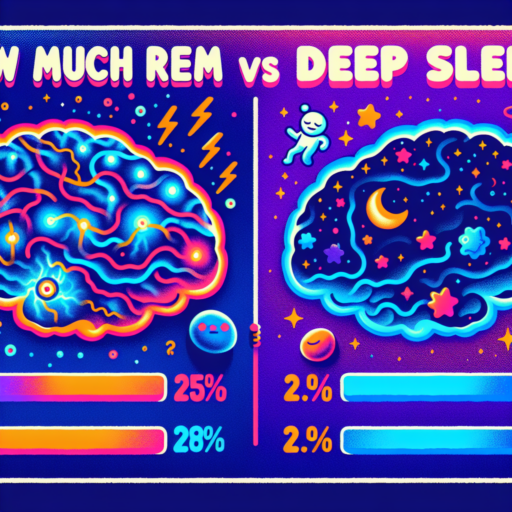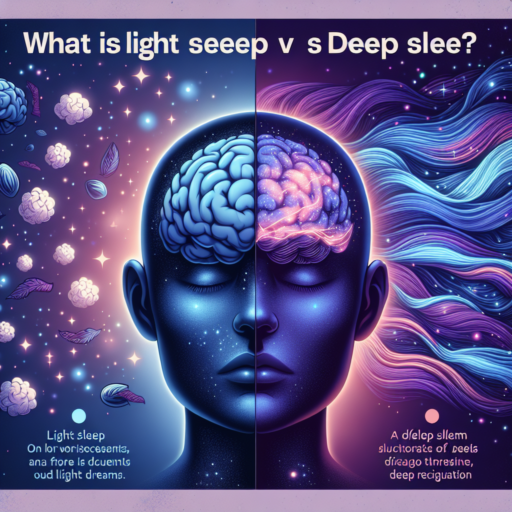What brain waves are in each stage of sleep?
Understanding the various stages of sleep is crucial for comprehending our sleep patterns and overall well-being. Each stage of sleep is characterized by different brain waves, which reflect the brain’s activity during these times. This exploration into the brain waves associated with each sleep stage can provide insights into how sleep impacts our mental, emotional, and physical health.
During the initial stage of sleep, often referred to as light sleep, we see the presence of Theta waves. This stage acts as a transition from wakefulness to sleep, and the presence of Theta waves signifies a slowing down of brain activity. It’s a period of easy awakenings, yet an essential part of the sleep cycle for transitioning deeper into sleep.
As we move into stage two of sleep, the brain begins to produce sleep spindles and K-complexes. This stage still features Theta waves but is distinct due to these short bursts of higher frequency brain waves. Sleep spindles and K-complexes are believed to play a key role in consolidating memories and cognitive functions.
The deep sleep stages, also known as slow-wave sleep, are characterized primarily by Delta waves. These are the slowest and highest amplitude brain waves, indicating the deepest levels of restorative sleep. It’s during these stages that the body focuses on healing and growth, making Delta waves critical for physical recovery and health.
What are the four waves of sleep?
Understanding the four waves of sleep is vital in comprehending how our bodies rest and recover. As we journey through the night, our brain exhibits distinct patterns of brain waves that correspond to different sleep stages, each vital for overall health and well-being.
The Four Waves of Sleep
- N1 Stage (Light Sleep): This initial phase marks the transition from wakefulness to sleep. During the N1 stage, brain waves slow down, producing high amplitude theta waves. This is the lightest stage of sleep, and individuals are easily awakened.
- N2 Stage (True Light Sleep): The second phase deepens the sleep as the brain begins to emit bursts of rapid, rhythmic brain wave activity known as sleep spindles. Theta waves still dominate this stage, but interruption becomes more difficult.
- N3 Stage (Deep Sleep): Also known as slow-wave sleep (SWS), this stage is characterized by delta waves, the slowest and highest amplitude brain waves. The N3 stage is crucial for restorative sleep, allowing for body repair and growth.
- REM Sleep: The final stage, rapid eye movement (REM) sleep, features brain activity similar to when you are awake. This phase is associated with vivid dreams, and it plays a key role in memory consolidation and mood regulation.
Each of these stages plays a critical role in the sleep cycle, helping to restore the body and mind. The journey through these four waves ensures that we wake up feeling refreshed and rejuvenated. Understanding these stages can also be key in addressing sleep-related issues and improving overall sleep quality.
No se han encontrado productos.
Is REM or deep sleep better?
When discussing the quality of sleep, the question of whether REM or deep sleep is superior often surfaces. Both stages are critical for different aspects of health and well-being, making the comparison not as straightforward as it might initially appear. REM, standing for Rapid Eye Movement, and deep sleep, a phase where the brain waves slow down significantly, serve distinct functions in our sleep cycles.
In the realm of memory consolidation, REM sleep plays a pivotal role. It’s during this phase that the brain processes and integrates new information with existing knowledge, contributing to learning and memory retention. On the other hand, deep sleep is crucial for physical restoration, cell regeneration, and the strengthening of the immune system. This stage is essentially the body’s opportunity to repair itself from the wear and tear of the day.
Furthermore, the balance between REM and deep sleep can influence emotional and mental health. REM sleep has been associated with the processing of emotions, helping to regulate mood and stress levels. A lack of sufficient REM sleep might lead to heightened anxiety or mood disturbances. Conversely, without adequate deep sleep, one might experience diminished energy, reduced ability to focus, and an overall decrease in physical wellbeing.
Is REM sleep high or low frequency?
When discussing the complexity of sleep cycles, a common question arises: Is REM sleep high or low frequency? REM sleep, or Rapid Eye Movement sleep, can be characterized by its unique frequency and amplitude of brain waves compared to other stages of sleep. It’s crucial to understand the nuances of REM’s brain wave patterns to fully grasp its categorization in terms of frequency.
REM sleep exhibits a mix of brain wave frequencies that can be detailed further under specific evaluations. Generally, this phase of sleep is associated with low amplitude, mixed-frequency brain wave activity, appearing similar to that observed in the waking state. However, it is the presence of rapid eye movements, alongside low muscle tone and vivid dreams, that distinctly defines REM sleep from other sleep stages.
Through electroencephalogram (EEG) readings during sleep studies, REM sleep brain waves predominantly show frequencies that are considered to be in the lower end when compared to the waking state but are more varied and higher than those seen in the deep stages of non-REM (NREM) sleep. This variability underscores the complexity of categorizing REM sleep strictly as high or low frequency without considering the broader context of sleep architecture.




